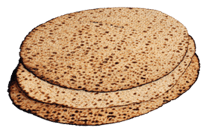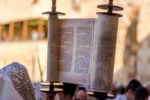
Sefirat HaOmer—A Study in Klal u’Prat
The forty-nine days between Passover and Shavuot are called the days of Sefira or the days of counting Omer—Sefirat HaOmer—when Jews count every day as

The forty-nine days between Passover and Shavuot are called the days of Sefira or the days of counting Omer—Sefirat HaOmer—when Jews count every day as

The collapse of the wave function is the process of revealing hidden possibilities. Reducing uncertainty reveals information. Until the wave function collapse, the system is

Шавуот Праздник Дарования Торы Aлександр Полторак Закончился праздник Песах. Все евреи поспешно убрали пасхальную посуду в особые шкафы или на чердаки до следующего Песаха.
The Torah portion, Re’eh, talks about the Sabbatical Year—in Hebrew, Shemitah—the Seventh year. When the Sabbatical year comes, all loans are forgiven, and Jewish servants

The Passover Seder is called seder, i.e., “order” not without a reason. It is a highly structured and orchestrated ceremony that follows the ancient script—Passover

There were men who were ritually unclean [because of contact with] a dead person, and therefore could not make the Passover sacrifice on that day.

Passover has ended. All Jews hastily return their Passover dishes to storage in special cabinets or the attic until the next Passover. After an eight-day
On Seder night we drink four cups of wine and eat three matzoth. Why four cups and not three? Why three matzoth and not four?
The Shulchan Aruch – the Code of Jewish Law – states that 30 days before Pesach (Passover) one needs to start learning the laws of
The holiday of Passover – Pesach – is called zman cheruteinu– time of our freedom. As we have discussed many times on this blog (see

As we have discussed in the post, It’s the time, stupid, Pharaoh never got the message that it’s all about mastery of time. To make

Speak to the children of Israel and have them take for you a perfectly red unblemished cow, upon which no yoke was laid… The cow
And the entire Mount Sinai smoked because the Lord had descended upon it in fire, and its smoke ascended like the smoke of the kiln…

There is hardly a Jewish holiday more widely celebrated than Passover (Pesach). Jews of all denominations, affiliations, and levels of religious observance, if any at